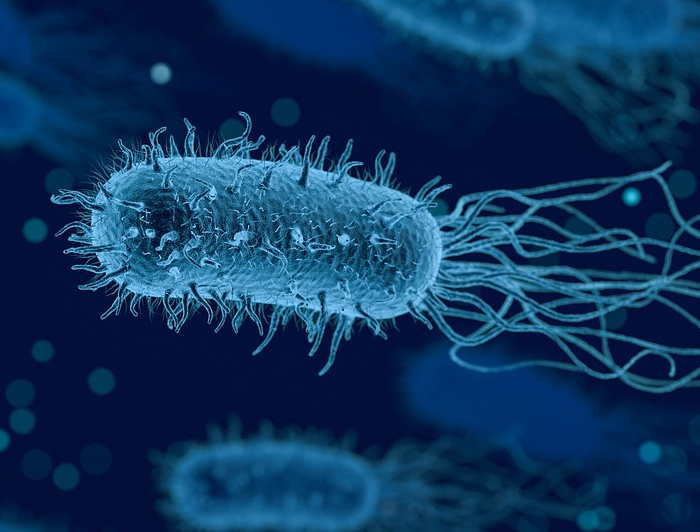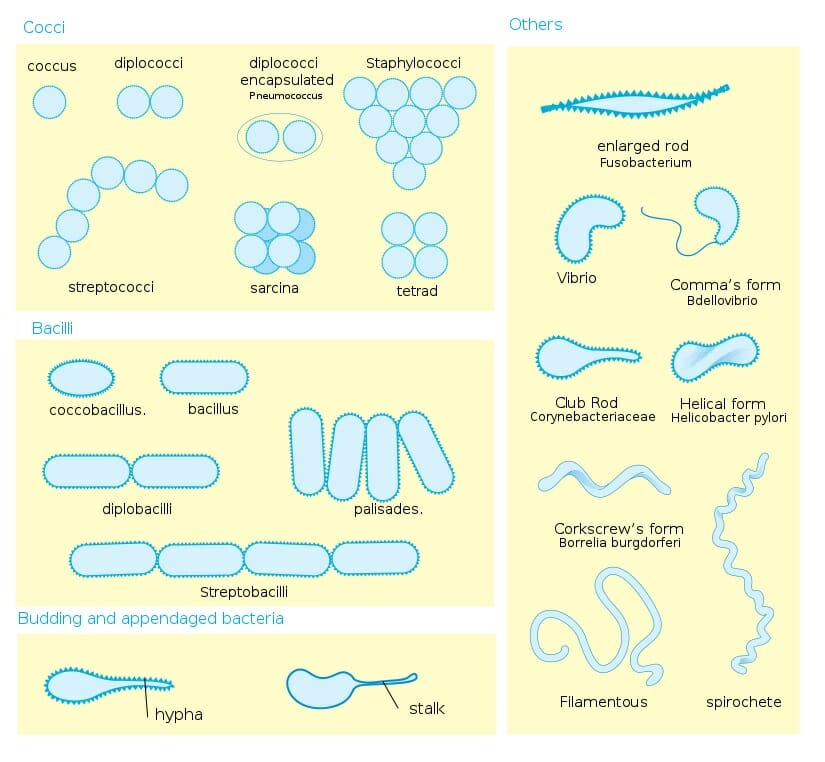Bacteria are unicellular microorganisms with prokaryotic cells, which are unit cells that have no organelles or organelles. nucleus and are less complex than cells eukaryotes. Bacteria with a capital B refer to the domain Bacteria, one of the three domains of life. The other two domains of life are Archaea, whose members are also single-celled organisms with prokaryotic cells, and Eukaryota. Bacteria are extremely numerous and the total biomass of bacteria on Earth is more than all plants and animals combined.

Evolution of bacteria
Bacteria first appeared on Earth approximately 4 billion years ago, and were the first forms of life on Earth. For 3 billion years, bacteria and archaea were the most common types of organisms on Earth. Multicellular eukaryotes did not appear until about 1.6-2 billion years ago. Eukaryotic cells, which make up all protists, fungiIt is believed that the mitochondria in eukaryotes, which produce energy through the production of energy, are the mitochondria of the mitochondrion, and that the mitochondria in plants and animals also contain what were once bacteria. cellular respirationand the chloroplasts in plants and algaewhich produce energy through the photosynthesisboth evolved from bacteria that were absorbed by the cells in an endosymbiotic (mutually beneficial) relationship that became permanent over time.
Characteristics of bacteria
Bacteria are single-celled organisms. They lack organelles such as chloroplasts and mitochondria, and do not have the true nucleus found in eukaryotic cells. Instead, their DNAa double-stranded DNA, which is continuous and circular, is found in a nucleoid. The nucleoid is a region of irregular shape that does not have nuclear membrane. Bacteria also have a cell membrane and a cell wall which is often made of peptidoglycan. Together, the cell membrane and cell wall are called the cell envelope. Many bacteria need a cell wall to survive.
Reproduction occurs through the binary fissionwhich is the splitting of a cell bacterial cell after it reaches a certain size. Bacteria reproduce asexually, so the two daughter cells that result from binary fission have the same DNA as the parent cell. However, some bacteria can also exchange genetic material with each other in a process known as horizontal gene transfer. This method involves two existing bacteria; it is not a form of parent-to-child transmission.
Forms of bacteria
Bacteria come in a wide variety of forms. The three main forms of bacteria are coccus, spiral and bacillus.
- Cocci are spherical or ovoid-shaped bacteria. Some cocci remain attached after binary fission, even though separate cells have formed. For example, diplococci are cocci in pairs, streptococci are chains, and staphylococci are clusters of multiple cocci. Tetrads are square arrangements of four cocci, while sarcinae are cubes of eight cocci.
- Spiral bacteria are, as the name implies, spiral-shaped. Spirochetes are thick, tough spirals. Spirochetes are thin, flexible coils. Vibrios are comma-shaped rods with a small twist.
- Bacilli are rod-shaped bacteria. Like cocci, bacilli can be solitary or grouped together. Diplobacilli are two bacilli arranged side by side and streptobacilli are chains of bacilli.
Bacteria can also have other shapes, such as filamentous (long and thin), square, star-shaped and stalked. This diagram shows the many forms of bacteria.

Types of bacteria
The cell wall also makes Gram staining possible. Gram staining is a method of staining bacteria that includes crystal violet dye, iodine and safranin counterstaining. Many bacteria can be classified into one of two types: gram-positive, which show the stain and appear violet under the microscope, and gram-negative, which only show the counterstain and appear red. Gram-positive bacteria appear violet because they have thick cell walls that trap the violet-iodine crystal complex. The thin cell walls of gram-negative bacteria cannot contain the violet-iodine complex, but they can contain safranin. This makes gram-negative bacteria appear red under Gram staining. The Gram stain is used for general identification of bacteria or to detect the presence of certain bacteria; it cannot be used to identify bacteria in any specific way, such as at the level of species. Examples of gram-positive bacteria include the genera Listeria, Streptococcus and Bacilluswhile gram-negative bacteria include Proteobacteria, bacteria from sulphur bacteria green and cyanobacteria.
Examples of bacteria
Escherichia coli is an example of a common species of bacteria. It is in the form of a bacillus and is found naturally in the intestines of many animals, including humans, where it produces vitamin K and B-complex vitamins. E. coli is also often used in laboratory research, as it reproduces rapidly and is resistant. Most strains of E. coli are harmless to humans, but some can cause infections. The infection by E. coli can cause gastrointestinal problems such as diarrhoea and, in more severe cases, bacterial meningitis or pneumonia.
Lactobacillus acidophilus is another species of bacteria in the form of a bacillus found naturally in places like the intestines and vagina, where it protects against harmful bacteria. It is a probiotic, a bacterium found in certain foods such as yoghurt and other fermented foods that is consumed to help absorb nutrients and replenish the body’s supply of “good” bacteria. It can also be consumed in small amounts by lactose intolerant people to help them consume lactose.
Some bacteria can be extremely harmful, such as Clostridium botulinumthe bacterium that causes botulism. C. botulinum produces botulinum neurotoxin, which is responsible for the symptoms of botulism. Symptoms include blurred vision, nausea, difficulty breathing, muscle weakness and paralysis. The toxin botulinum toxin is the most deadly toxin known; just one kilogram of botulinum would be deadly enough to kill the entire population human.
- Prokaryote: organism which has a prokaryotic cell simple; bacteria and archaea are prokaryotes.
- Binary fission: a method by which bacteria reproduce asexually by dividing.
- Probiotic: a bacterium that helps maintain a healthy digestive tract when consumed.
- Horizontal gene transfer: gene transfer between two organisms that are neither parents nor offspring.
